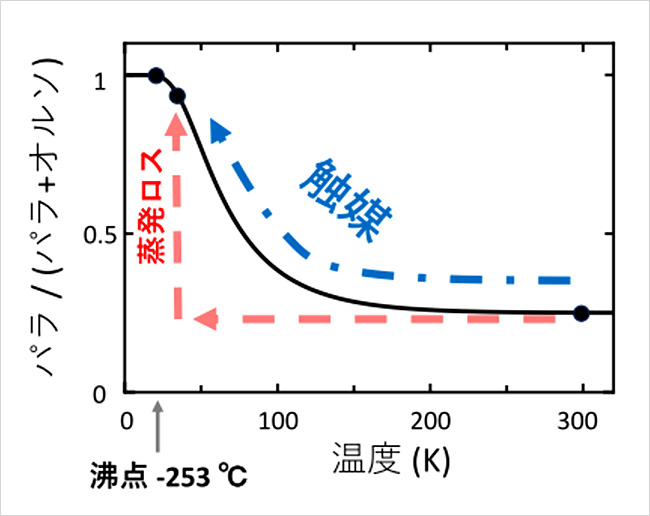2023-12-15 ライス大学
◆ライス大学の研究者は、円運動を示すキラルフォノンと材料の電子帯構造の位相構造との関連性を解明。磁場を適用することでキラル振動が生じ、位相構造を変えた新材料では磁気モーメントが通常の材料よりも2桁大きくなりました。これにより、フォノンの磁気特性を制御し、熱伝導率を変える新しい知見が得られ、材料科学者が異なるデバイス応用に適した材料を見つける手助けとなります。
<関連情報>
- https://news.rice.edu/news/2023/electronic-pathways-may-enhance-collective-atomic-vibrations-magnetism
- https://www.science.org/doi/10.1126/sciadv.adj4074
- https://journals.aps.org/prl/abstract/10.1103/PhysRevLett.128.075901
フォノンキラリティーと電子バンドトポロジー間の相互作用の観察 Observation of interplay between phonon chirality and electronic band topology
Felix G. G. Hernandez*,† ,Andrey Baydin† ,Swati Chaudhary,Fuyang Tay ,Ikufumi Katayama,Jun Takeda,Hiroyuki Nojiri ,Anderson K. Okazaki ,Paulo H. O. Rappl ,Eduardo Abramof ,Martin Rodriguez-Vega ,Gregory A. Fiete ,and Junichiro Kono
Science Advances Published:15 Dec 2023
DOI:https://doi.org/10.1126/sciadv.adj4074

Abstract
The recently demonstrated chiral modes of lattice motion carry angular momentum and therefore directly couple to magnetic fields. Notably, their magnetic moments are predicted to be strongly influenced by electronic contributions. Here, we have studied the magnetic response of transverse optical phonons in a set of Pb1−xSnxTe films, which is a topological crystalline insulator for x > 0.32 and has a ferroelectric transition at an x-dependent critical temperature. Polarization-dependent terahertz magnetospectroscopy measurements revealed Zeeman splittings and diamagnetic shifts, demonstrating a large phonon magnetic moment. Films in the topological phase exhibited phonon magnetic moment values that were larger than those in the topologically trivial samples by two orders of magnitude. Furthermore, the sign of the effective phonon g-factor was opposite in the two phases, a signature of the topological transition according to our model. These results strongly indicate the existence of interplay between the magnetic properties of chiral phonons and the topology of the electronic band structure.
PbTeにおけるソフトキラルフォノンの磁気制御 Magnetic Control of Soft Chiral Phonons in PbTe
Andrey Baydin, Felix G. G. Hernandez, Martin Rodriguez-Vega, Anderson K. Okazaki, Fuyang Tay, G. Timothy Noe, II, Ikufumi Katayama, Jun Takeda, Hiroyuki Nojiri, Paulo H. O. Rappl, Eduardo Abramof, Gregory A. Fiete, and Junichiro Kono
Physical Review Letters Published 15 February 2022
DOI:https://doi.org/10.1103/PhysRevLett.128.075901
ABSTRACT
PbTe crystals have a soft transverse optical phonon mode in the terahertz frequency range, which is known to efficiently decay into heat-carrying acoustic phonons, resulting in anomalously low thermal conductivity. Here, we studied this phonon via polarization-dependent terahertz spectroscopy. We observed softening of this mode with decreasing temperature, indicative of incipient ferroelectricity, which we explain through a model including strong anharmonicity with a quartic displacement term. In magnetic fields up to 25 T, the phonon mode splits into two modes with opposite handedness, exhibiting circular dichroism. Their frequencies display Zeeman splitting together with an overall diamagnetic shift with increasing magnetic field. Using a group-theoretical approach, we demonstrate that these observations are the result of magnetic field-induced morphic changes in the crystal symmetries through the Lorentz force exerted on the lattice ions. Thus, our Letter reveals a novel process of controlling phonon properties in a soft ionic lattice by a strong magnetic field.



